Marketing Plan Elements
Typical marketing plans begin with an executive summary and include audience demographics, company objectives, situational analysis of the business, and marketing strategies and tactics. Market research and analysis provide campaign direction, and the budget and timeline offer practical parameters.
A marketing plan can provide an overview of all strategies and campaigns to be executed in a certain time frame, or it can focus on a specific product, channel, or strategy. The level of detail and the sections included might vary, depending on the organization’s needs.
The nine main elements of a marketing plan are:
Executive Summary and Mission Statement: A concise, high-level summary conveys the purpose of your marketing plan, introduces key strategies and research insights, and highlights the most important takeaways for stakeholders.
For example, an executive summary might outline your brand’s identity, its place within the competitive landscape, and the major opportunities that upcoming marketing campaigns will target. Longer plans might include a separate mission statement or vision statement to align marketing efforts with your company’s larger goals. Discover more examples of executive summaries with templates to help you write one effectively.
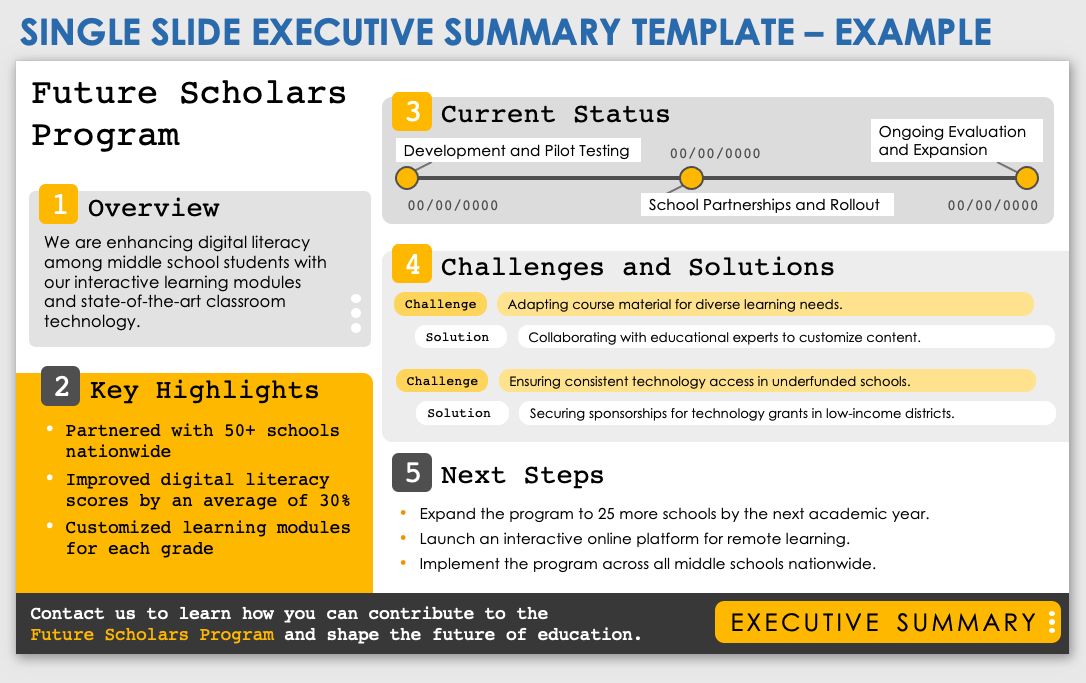
Situational Analysis: One of the most crucial elements of your marketing plan, a situational analysis is an assessment of the internal and external factors affecting a business’s performance. It should include research-based insights into market trends and dynamics, customer demographics and pain points, and internal resources.
A strong situational analysis often includes a SWOT (strengths, weaknesses, opportunities, threats) analysis, which provides a foundation for an effective marketing strategy. Learn more about how to perform a SWOT analysis.
Competitive Analysis: Understanding the competition is key to developing a compelling marketing plan. This analysis should consider recent marketing campaigns from similar brands to identify successful ways to reach a shared target audience. Being aware of the competitive landscape can also help your business develop a unique selling proposition and stand out in the market. The competitive analysis might be included in the larger situational analysis, or it might be a stand-alone section.
For example, a marketing plan could include data on how competitors rank on keywords, or it could evaluate the performance of competitors’ recent social media campaigns. One common framework for understanding market dynamics is a Porter’s five forces analysis, which identifies the forces that contribute to industry rivals. Learn how to evaluate the competitive landscape with free industry analysis templates.
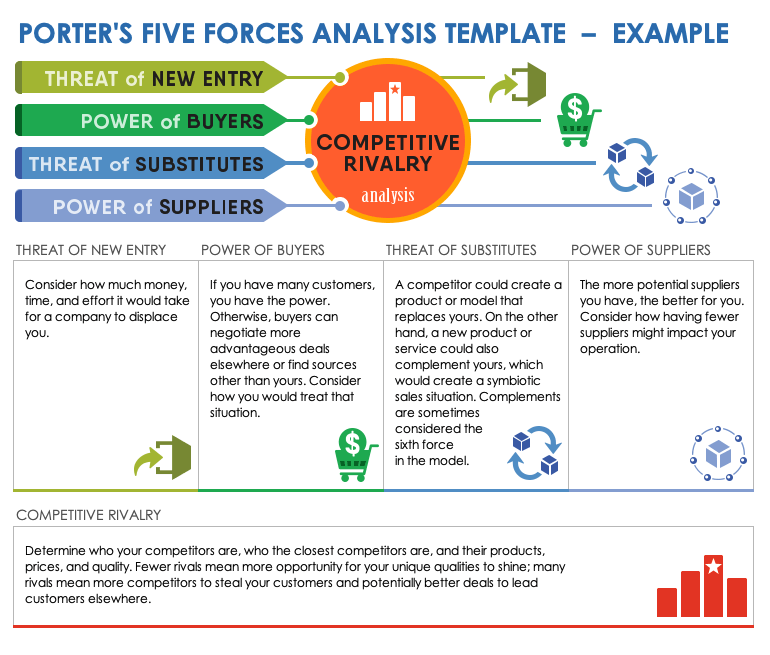
Target Audience: In order to implement marketing strategies that engage consumers and drive conversions, businesses need to know who their audience is, what they want, and how they behave. A marketing plan should define a specific, segmented target audience with demographic, geographical, psychographic, and behavioral data.
This section often includes customer profiles or buyer personas — fictionalized representations of ideal customers or audience segments — which help marketers typify consumer behaviors. These profiles should include media habits and most-used platforms to ensure that your marketing plan selects the right channels for each campaign. Learn how to analyze your target market with free customer profile templates.

Goals and Objectives: Marketing plans typically include both long-term goals, which provide broad direction for the company’s marketing strategy, and short-term objectives, which focus on more immediate tactics and campaigns. Goals should be SMART (specific, measurable, achievable, relevant, time-bound) and include corresponding key performance indicators (KPIs).
The goals and objectives in a marketing plan often focus on conversions, market share, brand awareness, or engagement. Clearly defined goals ensure strategically aligned marketing initiatives with measurable results. Take a look at real-world examples of SMART goals for more insights.

Marketing Strategy: This section of a marketing plan details the business’s unique value proposition and the channels that will communicate it. A robust marketing strategy addresses the touchpoints in a consumer’s buying cycle and breaks down the 4 Ps (product, price, place, promotion) of the marketing mix. Channels might include digital marketing, advertisements, social media, and influencer partnerships. To develop an overarching marketing strategy, consider using a marketing strategy template. To learn more about the 4 Ps, read this product marketing guide.
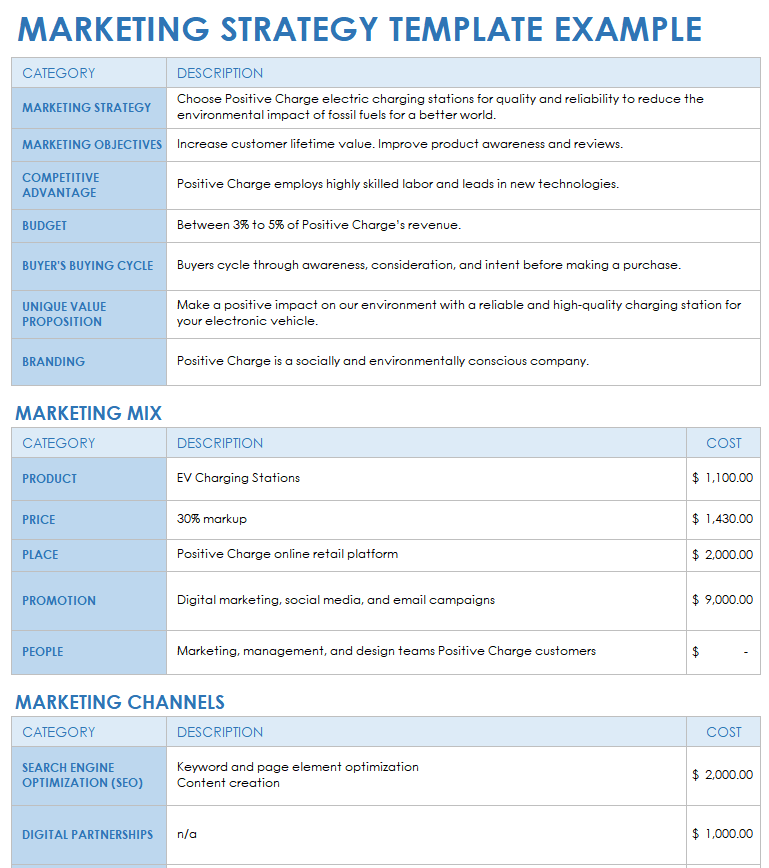
Tactics and Action Plan: A marketing plan is not an abstract strategy document, but a concrete roadmap for executing specific campaigns with specific tactics. Your plan should detail the messaging for each campaign and the corresponding methods for communication — such as email newsletters, social content, targeted ads, and public relations.
This section provides KPIs and actionable steps such as resource allocation, deliverables, and distribution plans. It might also include the expected outcome for each campaign. To plan individual campaigns, consider using a marketing project plan template.
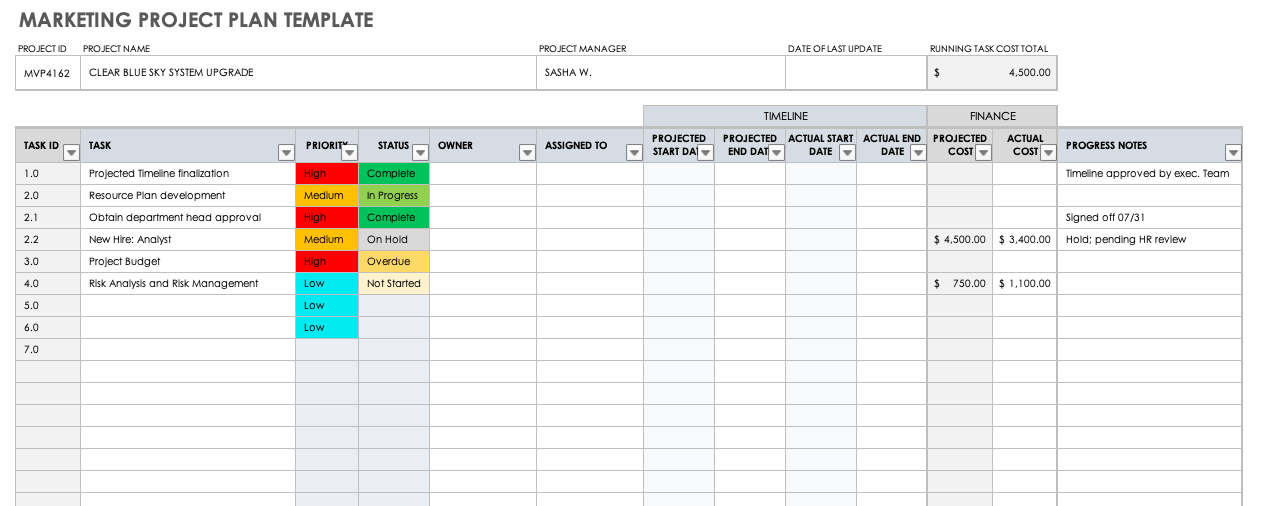
Budget: Marketing expenses might include the cost of advertising, content creation, website maintenance, or promotional materials; no marketing plan is complete without a budget that breaks down the costs of such initiatives. A clear, comprehensive budget ensures that marketing efforts are financially feasible and resources can be allocated for maximum impact. The budget also enables the marketing team to track the return on investment (ROI) of each campaign. To create a comprehensive budget, try our free marketing budget templates.

Timeline: Finally, a marketing plan includes a clear schedule for implementing its initiatives and tactics. This timeline details the start and end dates of each campaign, deadlines for deliverables, and key events or milestones. It keeps the marketing team aligned and initiatives on track, ensuring that marketing objectives can be achieved within the set time frame. Organize dates and deadlines with the help of a marketing timeline template.
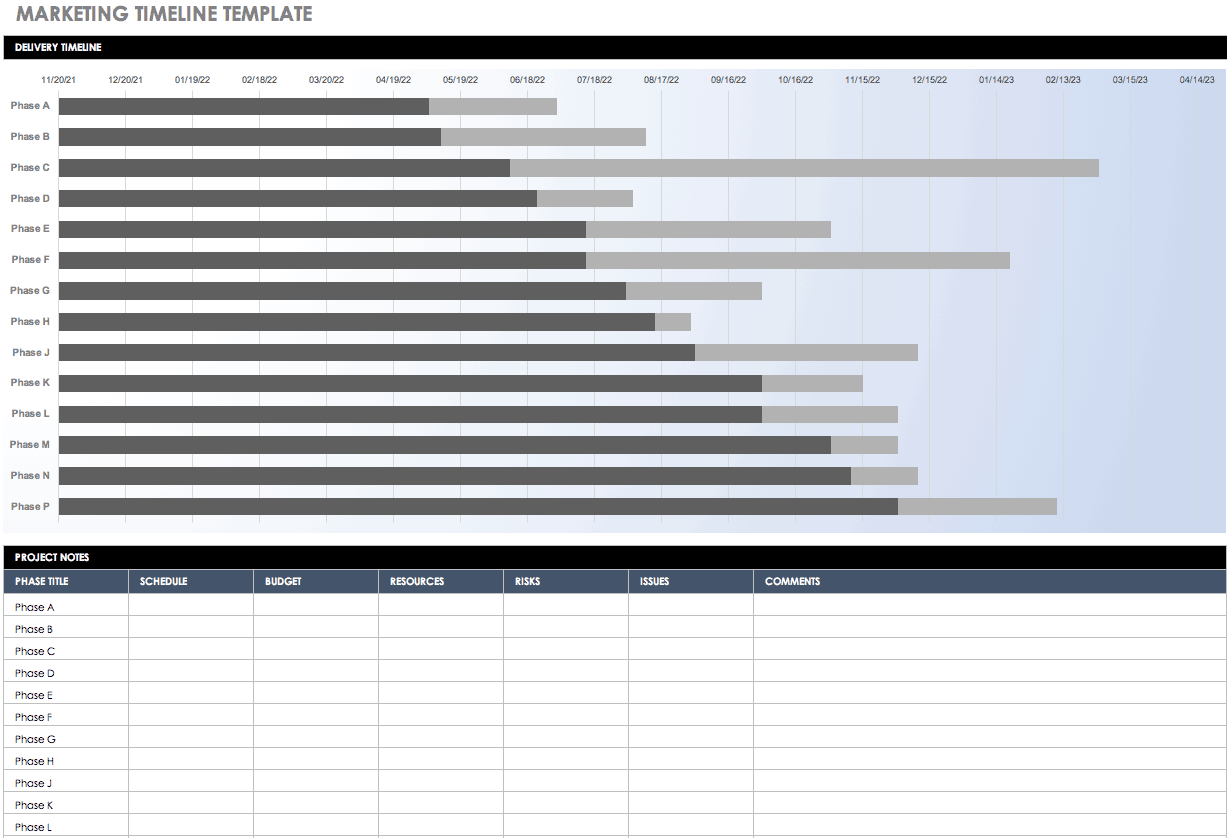
Marketing Plan Examples
Real-world marketing plans show how businesses utilize effective planning documents. These 10 examples from various industries exhibit unique strengths and weaknesses. With insightful commentary from marketing experts, these plans offer practical takeaways any marketer can use.
Delmarva and the Ground for Change
This in-depth marketing plan for a documentary produced by the USDA Northeast Climate Hub includes audience profiles, competitive analysis, and a distribution plan. Along with a detailed breakdown of its digital marketing strategy, it considers how different tactics will affect the viewer’s content journey.
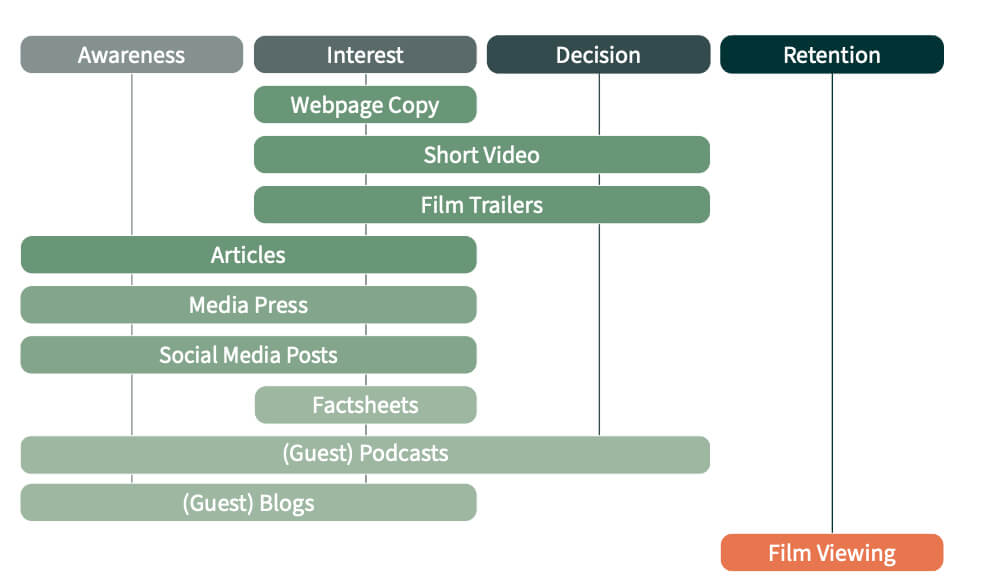

John Dinsmore, a marketing consultant and professor at Wright State University, praises this plan for its attractive design and thoughtful, thorough content: “They do a nice job of extrapolating on who the target market is and tying their tactics to achieving specific goals.”
He appreciates the inclusion of a SWOT analysis, but feels it could be done more effectively. “‘Opportunities’ is not a place for business ideas. It’s a place to identify external, positive trends that can help your initiative. In this context, an opportunity could be ‘Rising concern for and awareness of climate issues.’ Similarly, ‘threats’ is not a place to list things that are difficult. It’s for negative external trends such as ‘Increased skepticism over ability to combat climate change.’”
Dekker Fraser, former Global Marketing Manager at Sony PlayStation, adds that this plan includes a strong focus on collaborations with media and influencers: “Many marketing plans place too much emphasis on target customers and not enough on target collaborators.”
Minnesota Tourism
This marketing plan by Explore Minnesota, the state’s Department of Tourism, showcases Minnesota’s beauty with vivid imagery. It uses a variety of demographic information to identify priority audience segments and includes well-designed infographics that analyze audience and competition. As a result, the campaigns are clearly targeted at specific audiences and objectives.
John Rarrick, Head of Marketing at Movius Corp., admires the strength of the message behind the strategy. “This plan has a very well-developed ‘why,’” he says. “You’ll see that often when the plan is to repair or save something that has undergone a time of great loss — such as a loss of revenue or reputation. The audience personas, goals, tactics, and budget are all detailed and measurable.”
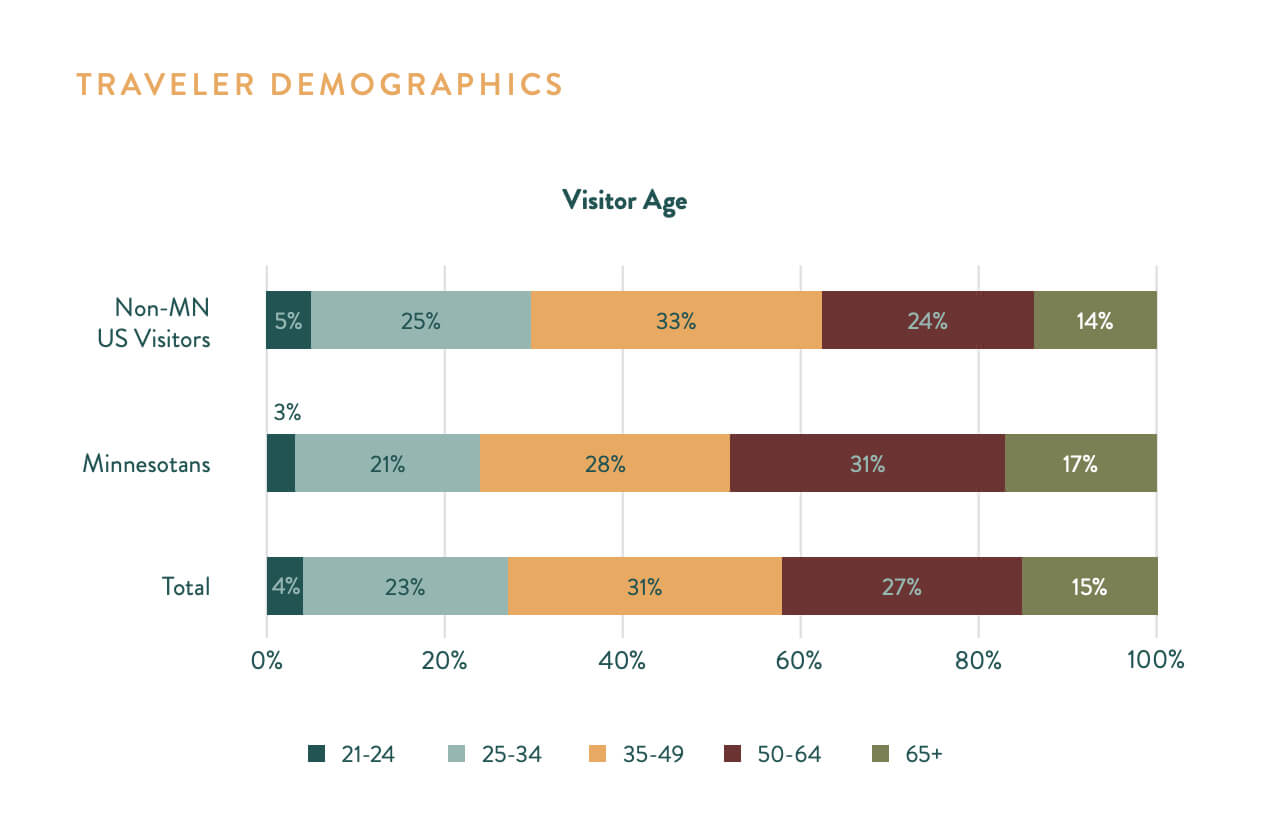
Gold Coast Transit District

A short, high-level marketing plan for Gold Coast Transit highlights key campaigns and includes the most important details, such as timelines, budgets, and tactics. It begins with a bulleted overview of the most important takeaways and takes into account general marketing efforts that don’t fit under a specific campaign umbrella.
Fraser notes that this plan includes year-round marketing initiatives, with an effective “emphasis on strong offers, such as youth-free fares.” However, he points out that its brand awareness goals could be more specific. “Instead, use context-specific awareness goals such as ‘When commuting to work, residents first think of Gold Coast Transit’ or ‘When coming home from the library at night, I think of taking the bus,’” he says. “In other words, peg awareness to specific category-entry points.”
University of Arizona College of Engineering
This marketing, branding, and communications plan for the University of Arizona College of Engineering sets out a long-term vision, high-level goals, and strategies for achieving these goals. It has a section for methodology — including promotional videos and email newsletters — and segments its audience to align with its strategies.
This plan “demonstrates a clearly defined audience,” according to Rarrick. That said, not every section of the plan includes the same level of specificity. “The KPIs are vague,” he adds. “I would expect to see something more measurable, rather than ‘increase’ or ‘improve.’”
Timberland Regional Library
This library's two-year marketing plan sets initiatives in motion with a clear schedule for action. It includes both promotional and production calendars for effective planning, which is especially important for campaigns pegged to external events.
Dinsmore cites this plan’s “professional and elegant graphic design” as a strength. It also offers a roadmap for tackling several marketing campaigns on different timelines. However, he suggests that the plan needs more measurable goals and defined strategies. “There’s no overarching strategy that ties all of these tactics and initiatives together,” he says. “It’s just a laundry list of dates and actions.”
Safe Haven Family Shelter
Nonprofit organizations need creative marketing strategies to reach their targets and use funds efficiently. With specific objectives and actionable steps, this marketing plan for Safe Haven Family Shelter delineates high-level goals and details the path to achieving them. It identifies the roles and responsibilities of individual team members to ensure alignment.
Rarrick commends this plan for its “clearly defined audience and very clearly defined goals.” The plan showcases the differences between strategic business goals and measurable marketing objectives.
Visit Myrtle Beach
This destination marketing plan by the Myrtle Beach, South Carolina Chamber of Commerce incorporates detailed information about target markets, audience personas, and key behaviors. It includes an infographic that illuminates the touchpoints in a traveler’s journey and shows the marketing team how each tactic contributes to conversions.
Overall, Dinsmore praises this plan as a “very smart and thoughtful presentation.” It outlines a distinct media mix for each target audience, defines its objectives clearly, and ties these objectives to success metrics. He continues, “I want to thank the Myrtle Beach folks for planning to measure their efforts. Measurement is often anathema to marketing people, but if you’re not measuring, you don’t know how to improve.”
With so much information to cover, the plan would benefit from an executive summary to introduce key takeaways. “The bigger the scope, the harder it is to make everything feel connected, and that’s a bit of an issue with this plan,” Dinsmore adds.

Tropical Avocados
This example of a no-frills plan was commissioned by the nonprofit Improving Economies for Stronger Communities (IESC) to help brand and launch tropical avocados in the U.S. market. It shows the importance of making branding decisions backed by market and consumer research. A detailed SWOT analysis and competitive analysis provide essential insights that enable the company to determine the best unique selling proposition.
A key strength of this plan is its detailed research into its audience. Fraser cites its “excellent identification of consumer objections — e.g., concern over how natural the avocado size is — and consumer behavior.” As a result, the brand can adopt effective messaging in its marketing campaigns. As with USDA Northeast Climate Hub’s Delmarva and the Ground for Change documentary, “target collaborators — e.g., food writers, organizations, and chefs — are included in the target audience. Collaborators are often more critical to the marketing plan than the consumers themselves,” Fraser adds.

Rochelle Community Hospital
This case study of Rochelle Community Hospital in Rochelle, Illinois, shows how a targeted marketing plan can be used to achieve significant results. The report by Legato Healthcare Marketing showcases the importance of reevaluating an existing marketing strategy — in this case, shifting the emphasis from print to digital.
External marketing agencies often have more tools at their disposal, particularly if the business has not had a strong digital presence. With targeted ads and website updates, the agency employed tactics with direct metrics in order to track its impact.

Visit Concord
This example from the Concord Tourism Improvement District marketing plan is concise and includes streamlined insights on the audience and market. It details each marketing channel with specific tactics and measurable KPIs.
The overall strategy, according to Fraser, offers “an excellent emphasis on social proof and word-of-mouth marketing,” as well as a “good balance of awareness and activation marketing.” In order to improve, he suggests, “the plan should factor in the following critical quantitative factors to help drive the media strategy: reach, frequency, and the total-addressable market.”
Marketing Plan Templates
Using a template takes the guesswork out of organizing a marketing plan document. These customizable templates include essential elements and options for specific industries or marketing channels, and they range from one-page plans to comprehensive, presentation-ready reports.
Microsoft Word Simple Marketing Plan Template
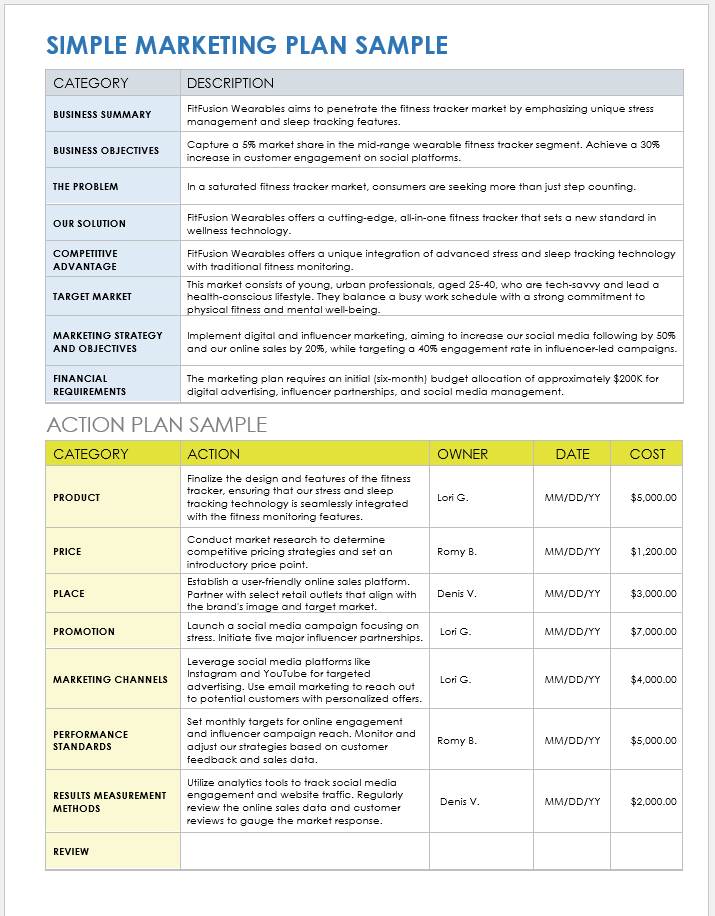
Download the Simple Marketing Plan Example Template for Microsoft Word
Download the Blank Simple Marketing Plan Template for Microsoft Word
This example of a simple, customizable plan focuses on key strategies and prioritizes readability. This one-page marketing plan template includes space to summarize marketing strategy and overarching business objectives, along with an action plan to highlight responsibilities and deadlines.
Microsoft Word Annual Marketing Plan Template
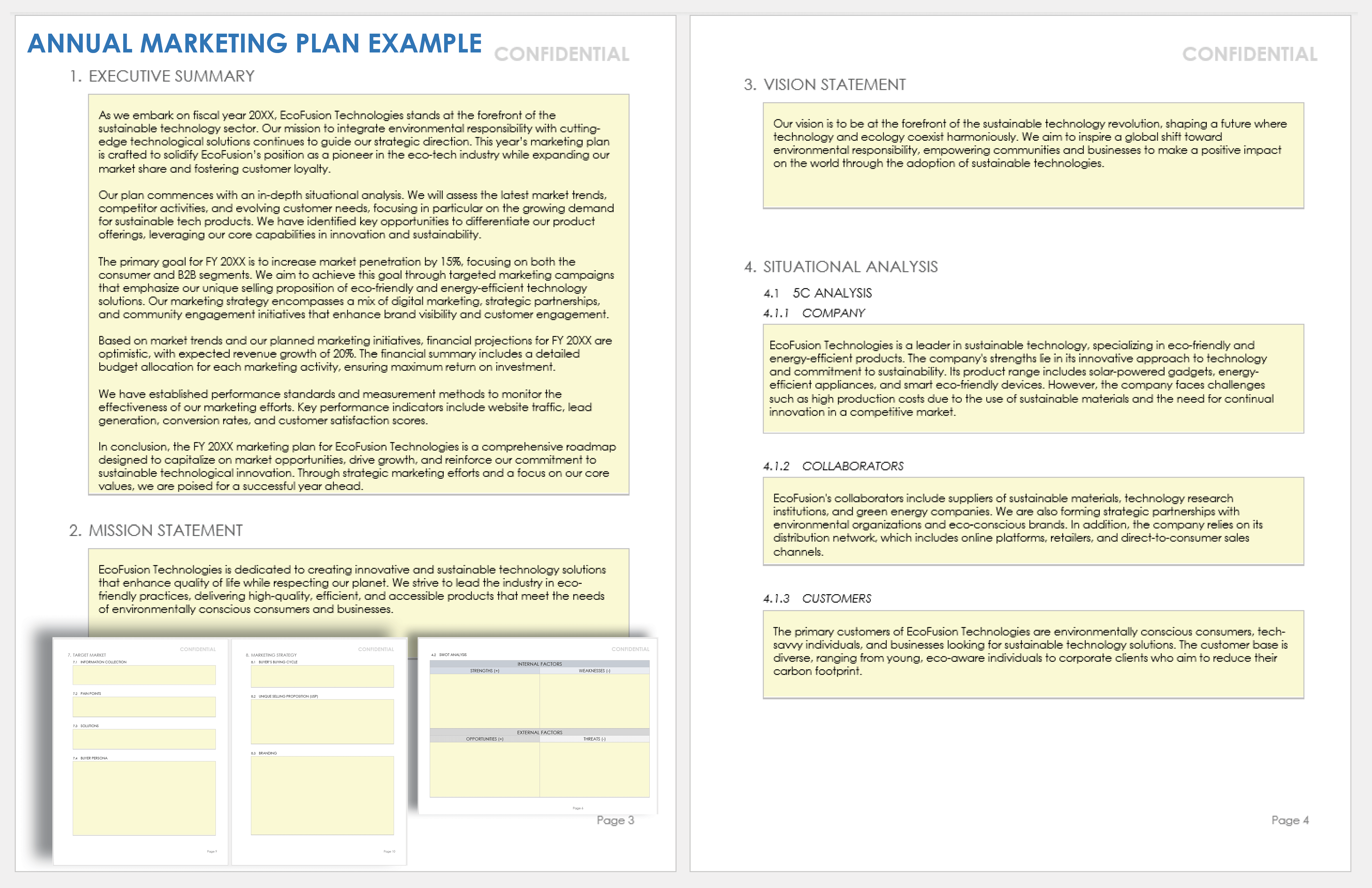
Download the Annual Marketing Plan Example Template for Microsoft Word
Download the Blank Annual Marketing Plan Template for Microsoft Word
This comprehensive marketing plan template includes a number of key sections — such as goals, target market, marketing channels, and performance standards — that can be customized to suit a variety of businesses. In the situational analysis, you can find space for both a 5C (company, collaborators, customers, competitors, climate) analysis and a SWOT analysis. The blank template begins with a table of contents, a business summary, and a mission statement to allow for easy readability. The sample focuses on marketing strategies for one fiscal year, but you can modify this plan for any time period.
Microsoft Word Small Business Marketing Plan Template

Download the Small Business Marketing Plan Example Template for Microsoft Word
Download the Blank Small Business Marketing Plan Template for Microsoft Word
A strong marketing plan is essential for small businesses looking to stand out from larger competitors. This small business marketing plan template provides an outline for a detailed marketing strategy, including a unique selling proposition, the 4Ps marketing mix, and marketing channels. It builds its strategy on situational analysis and identification of the business’s core capabilities. Find more marketing plan templates for different industries.
Microsoft Word Nonprofit Marketing Plan Template

Download the Nonprofit Marketing Plan Example Template for Microsoft Word
Download the Blank Nonprofit Marketing Plan Template for Microsoft Word
This example marketing plan for a nonprofit incorporates information on the funding climate into its situational analysis, as well as a detailed organizational summary. With sections for short- and long-term goals, marketing strategies and channels, and stakeholder profiles, the template is comprehensive and customizable. Find more nonprofit marketing plan templates here.
Excel Product Marketing Plan Template
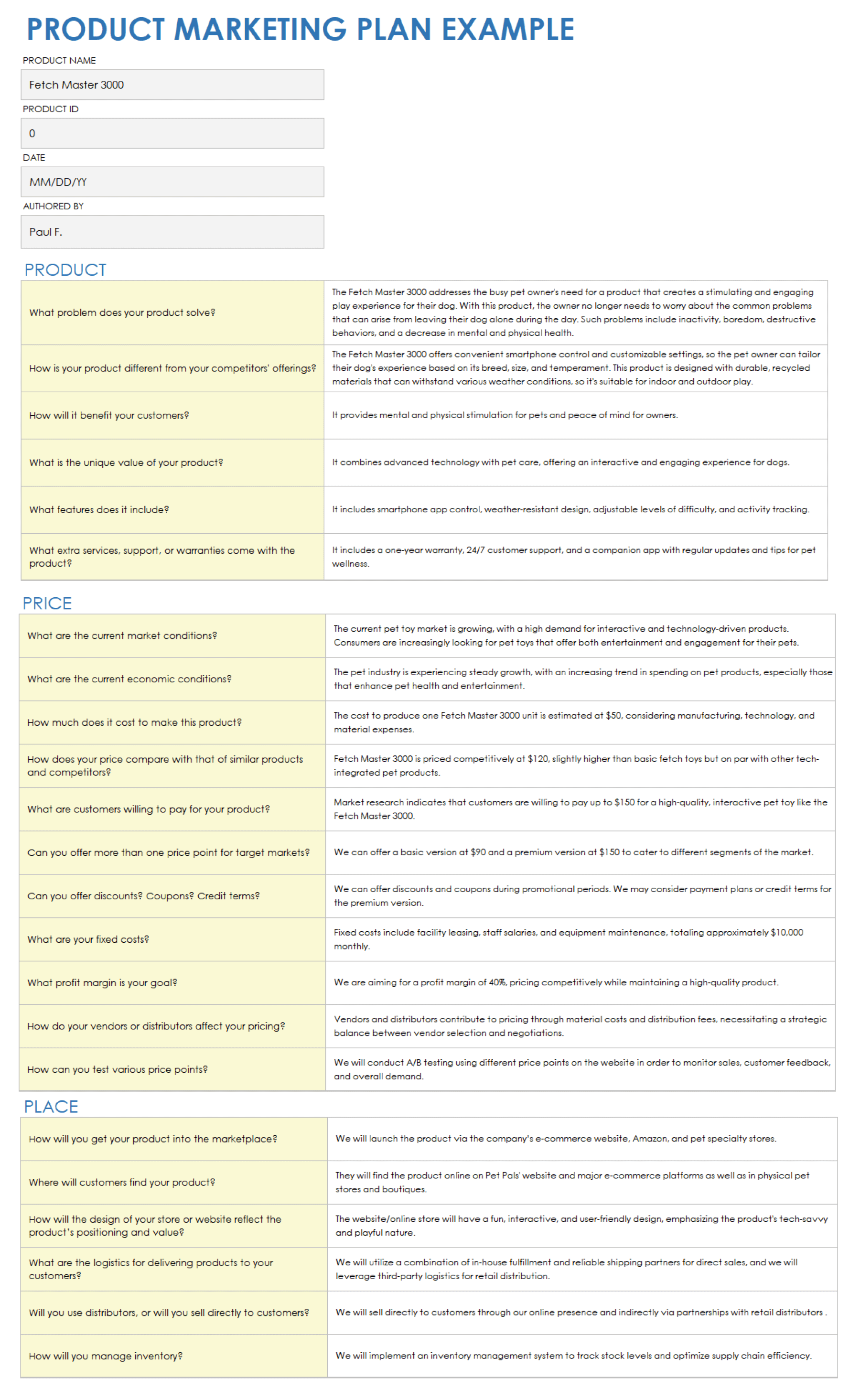
Download the Product Marketing Plan Example Template for Excel
Download the Blank Product Marketing Plan Template for Excel
When integrating a new product into existing marketing strategies, it’s important to take into account all the elements of the marketing mix. This product marketing plan template is organized by product, price, place, promotion, process, people, and physical evidence. In these sections, you can find space to consider market research, consumer behaviors, and marketing channels.
Excel Social Media Marketing Plan Template

Download the Social Media Marketing Plan Example Template for Excel
Download the Blank Social Media Marketing Plan Template for Excel
For planning specific campaigns, this social media marketing action plan template begins with the campaign goal, highlights important promo dates, and separates actions by platform. It’s useful for executing targeted social media campaigns within a larger marketing strategy. Find more marketing action plan templates here.
Excel Digital Marketing Plan Template
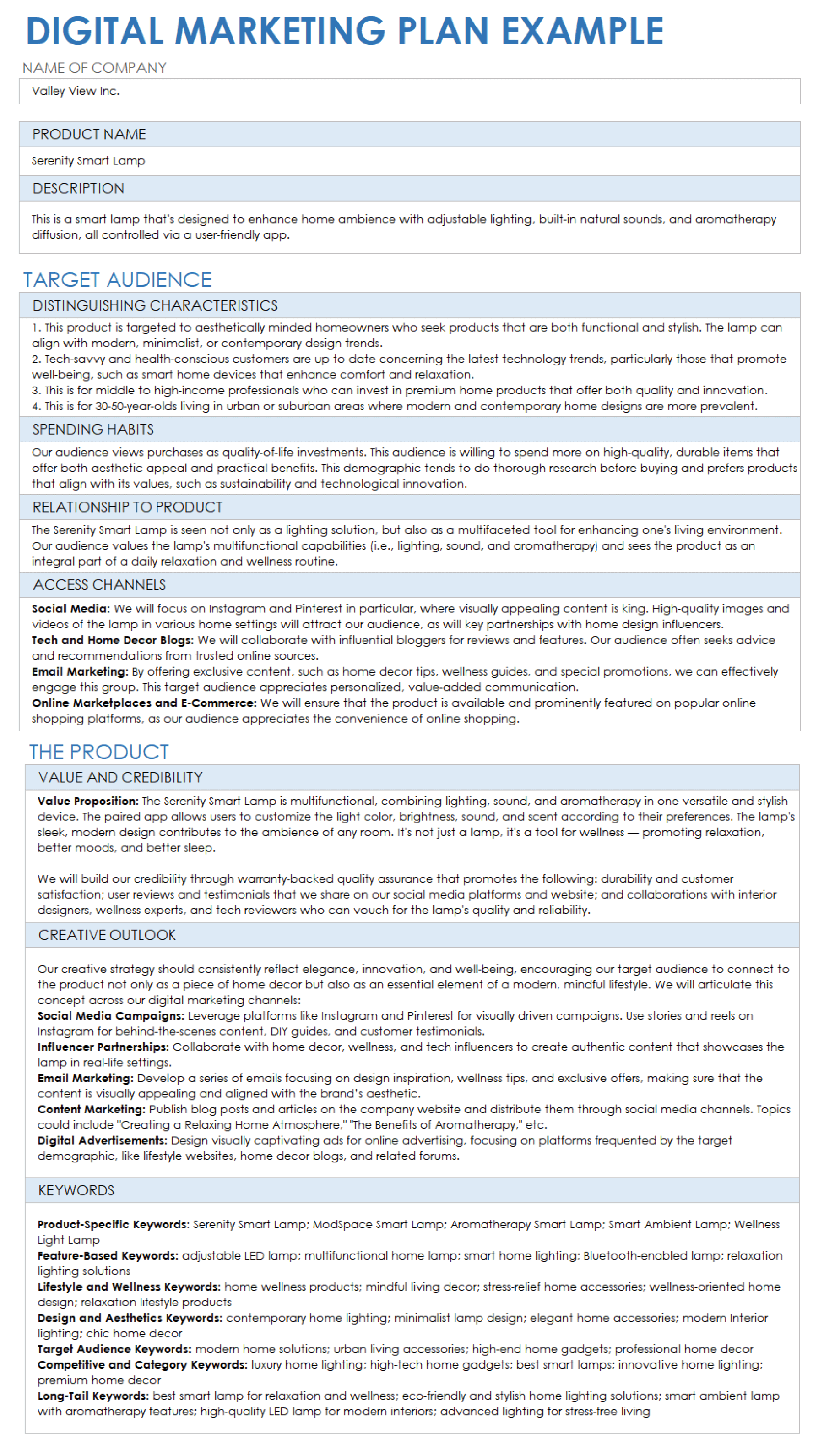
Download the Digital Marketing Plan Example Template for Excel
Download the Blank Digital Marketing Plan Template for Excel
Focusing on digital marketing channels is an effective way to organize strategies into a streamlined and actionable plan. This strategic digital marketing template highlights important audience behaviors and access channels to ensure messaging reaches consumers. Customizable for a variety of digital marketing projects, the template includes space for keywords, goals, and tasks. Find more digital marketing plan templates here.
Which Marketing Plan Format Is Right for You?
To choose the right marketing plan format for your needs, consider the plan’s role in your marketing strategy. Do you need a comprehensive plan to provide an overview of tactics that will take place over a long period of time? Or are you looking for a plan to focus on specific channels, campaigns, or product launches?
Each template in this article offers space to detail market research, strategies, and access channels. The longer plans include more sections for in-depth situational analysis and audience demographics, while the shorter plans focus on the marketing mix and action plan. This chart highlights the key elements of each marketing plan:
Simple | Annual | Small Business | Nonprofit | Product | Social Media | Digital | |
|---|---|---|---|---|---|---|---|
Executive |
| ✓ |
| ✓ |
|
|
|
Business/ | ✓ |
| ✓ | ✓ |
|
|
|
Mission/Vision |
| ✓ | ✓ | ✓ |
|
|
|
Product/ |
|
|
|
| ✓ | ✓ | ✓ |
Target Market | ✓ | ✓ | ✓ | ✓ |
|
|
|
5C Analysis |
| ✓ | ✓ |
|
|
|
|
SWOT Analysis |
| ✓ | ✓ | ✓ |
|
|
|
Competitive | ✓ | ✓ | ✓ | ✓ | ✓ |
|
|
Marketing Mix | ✓ | ✓ | ✓ |
| ✓ |
|
|
Long-Term Goals |
| ✓ | ✓ | ✓ |
|
| ✓ |
Short-Term Objectives | ✓ |
| ✓ | ✓ |
| ✓ | ✓ |
Action Plan | ✓ |
| ✓ | ✓ |
| ✓ | ✓ |
Performance Metrics | ✓ | ✓ | ✓ |
|
| ✓ |
|
Budget | ✓ | ✓ | ✓ | ✓ |
| ✓ | ✓ |
Timeline |
|
|
|
|
| ✓ | ✓ |
Streamline Your Marketing Plan Efforts with Smartsheet
The best marketing teams know the importance of effective campaign management, consistent creative operations, and powerful event logistics -- and Smartsheet helps you deliver on all three so you can be more effective and achieve more.
The Smartsheet platform makes it easy to plan, capture, manage, and report on work from anywhere, helping your team be more effective and get more done. Report on key metrics and get real-time visibility into work as it happens with roll-up reports, dashboards, and automated workflows built to keep your team connected and informed.
When teams have clarity into the work getting done, there’s no telling how much more they can accomplish in the same amount of time. Try Smartsheet for free, today.


